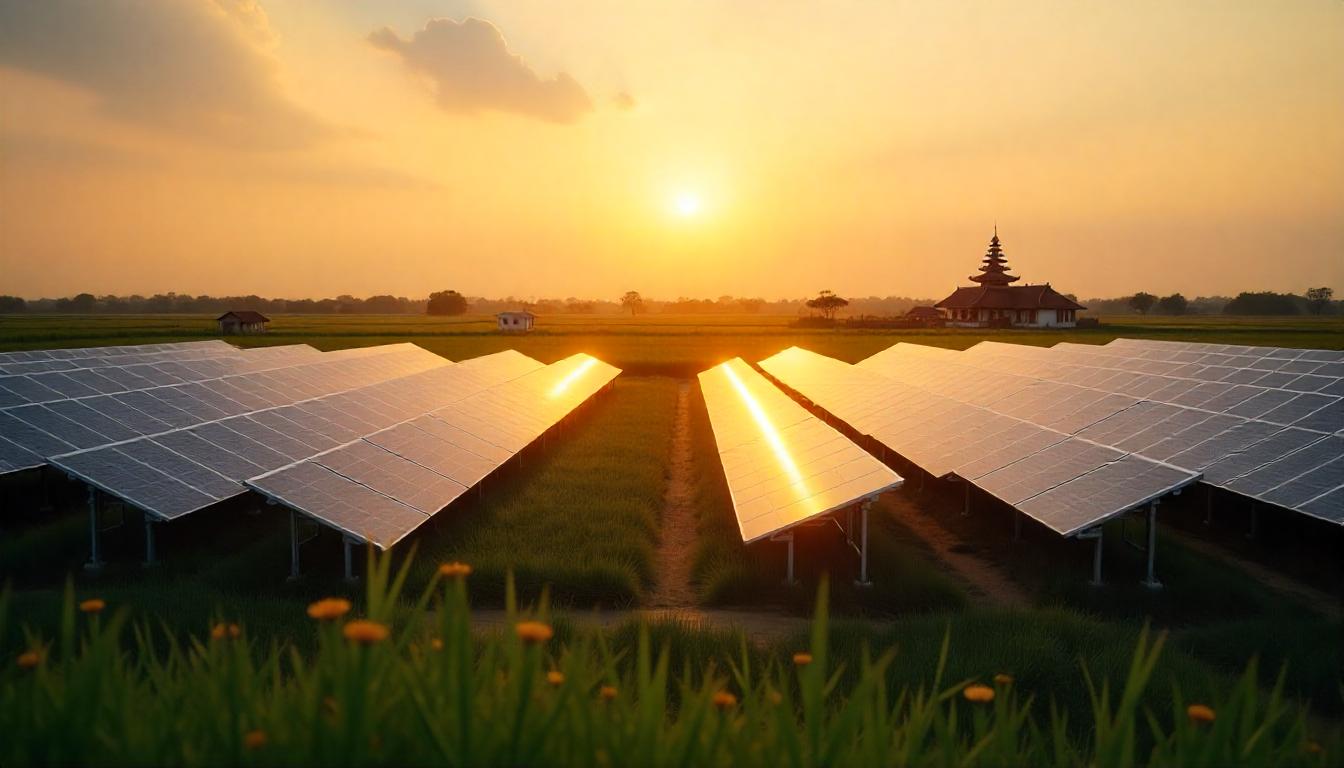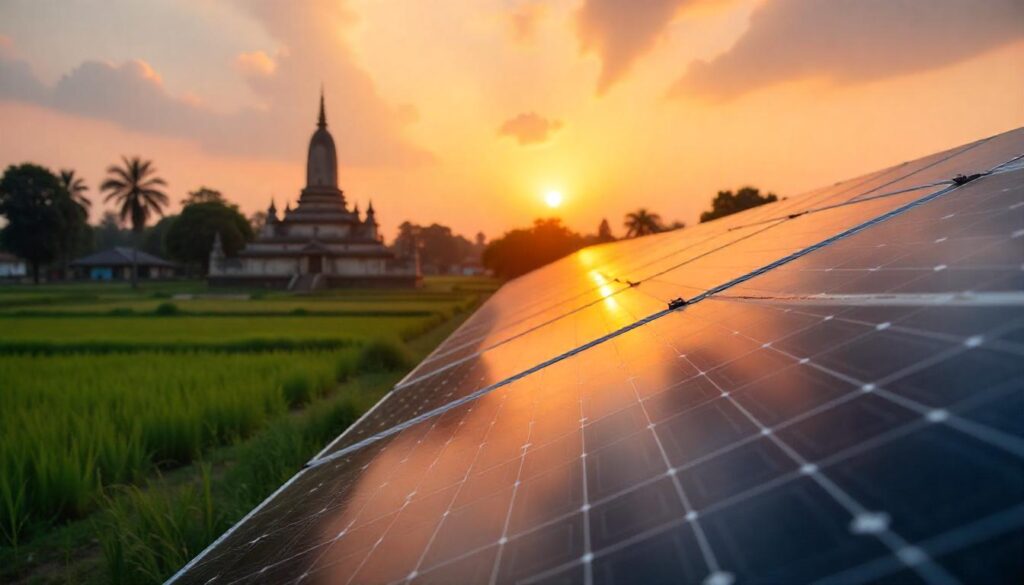Cambodia’s Green Energy: Diverse Investment Beyond Solar

Beyond Solar: Exploring Other Renewable Energy Technologies in Cambodia (Mini-Hydro, Biomass, and More)
Hello green energy enthusiasts! While solar power rightly garners significant attention in Cambodia’s renewable energy narrative, our Kingdom’s rich natural resources offer immense potential for a wider array of green technologies. Beyond the sun’s abundant rays, mini-hydro and biomass energy sources are also playing crucial roles in Cambodia’s journey towards a sustainable and diversified energy mix. This article delves into these equally significant renewable energy options, highlighting their potential and the attractive investment opportunities they present.
- Beyond Solar: Exploring Other Renewable Energy Technologies in Cambodia (Mini-Hydro, Biomass, and More)
- 1. Mini-Hydropower: Harnessing the Power of Our Rivers
- 2. Biomass Energy: Transforming Agricultural Waste into Power
- 3. Emerging and Niche Technologies: Diversifying Our Green Portfolio
- The Importance of Diversification: A Strategic Energy Approach
- Conclusion: A Green, Diverse, and Investable Energy Future
- Frequently Asked Questions (FAQs) about Other Renewable Energies in Cambodia
1. Mini-Hydropower: Harnessing the Power of Our Rivers
Cambodia’s extensive network of rivers and waterways provides an ideal setting for mini-hydropower projects. In contrast to large-scale dams, mini-hydro plants are typically smaller, designed with minimal environmental impact, and can be strategically developed closer to demand centers.
- Principle: Mini-hydro systems efficiently capture the kinetic energy from flowing water to turn turbines, generating clean electricity.
- Potential & Government Vision in Cambodia: These projects are particularly vital for electrifying rural areas not yet connected to the main grid, offering decentralized and reliable power. The Cambodian government actively supports the development of such projects, recognizing their contribution to rural development and energy equity. This focus creates tangible investment opportunities in community-scale renewable energy solutions.
2. Biomass Energy: Transforming Agricultural Waste into Power
Biomass energy utilizes organic matter, predominantly agricultural waste, to produce heat or electricity. As an agrarian nation, Cambodia generates significant amounts of residues like rice husks, sugar cane bagasse, and other organic byproducts. This makes biomass a substantial, often untapped, energy source.
- Principle: Biomass can be directly combusted to produce heat and steam for electricity generation, or it can be converted into biogas through anaerobic digestion processes.
- Potential & Economic Benefits in Cambodia: Industries such as rice mills and sugar factories can leverage their own waste to generate energy, thereby significantly reducing operational costs and addressing waste disposal challenges. This not only offers a sustainable waste management solution but also contributes to the national energy supply. The government encourages such circular economy initiatives, opening doors for investors in waste-to-energy projects.

3. Emerging and Niche Technologies: Diversifying Our Green Portfolio
While they’re still in nascent stages or with localized applications in Cambodia, it’s worth noting other promising technologies:
- Wind Energy: Specific coastal or elevated regions within Cambodia may hold potential for small-scale wind energy projects, diversifying regional energy sources.
- Waste-to-Energy: Converting municipal solid waste into energy is a rapidly growing area, helping to tackle both urban waste management and energy demands. The government’s focus on sustainable urban development makes this an emerging area for investment.
The Importance of Diversification: A Strategic Energy Approach
Diversifying Cambodia’s renewable energy portfolio beyond just solar is a strategic imperative for several reasons, fully supported by government policy:
- Enhanced Energy Security: Relying on multiple energy sources mitigates risks associated with intermittency (e.g., solar’s reliance on sunlight) and strengthens overall energy independence.
- Targeted Rural Electrification: Mini-hydro and biomass technologies are highly effective in delivering off-grid power solutions to remote communities, aligning with national development goals.
- Sustainable Resource Management: Biomass technologies, in particular, offer a dual benefit of energy production and sustainable management of agricultural and municipal waste, a key component of Cambodia’s green growth strategy.
Conclusion: A Green, Diverse, and Investable Energy Future
While solar power remains a flagship, Cambodia’s journey towards a greener future is significantly bolstered by the diverse potential of mini-hydro and biomass. The government’s forward-looking policies, coupled with the nation’s rich natural resources, create a vibrant and secure environment for investment across the entire spectrum of renewable energy technologies. By exploring and investing in these diverse sources, investors can actively contribute to Cambodia’s resilient, sustainable, and inclusive energy system, making it an undeniable destination for global green capital.
Frequently Asked Questions (FAQs) about Other Renewable Energies in Cambodia
- Q: Besides solar, what are the most promising renewable energy sources in Cambodia?
- A: Mini-hydropower and biomass energy are considered the most promising, with potential in specific regions and industries.
- Q: How does mini-hydro benefit rural communities in Cambodia?
- A: Mini-hydro projects can provide decentralized, reliable electricity to remote rural areas that are not connected to the national grid, significantly improving living standards.
- Q: What kind of waste is used for biomass energy in Cambodia?
- A: Primarily agricultural waste like rice husks, sugar cane bagasse, and other organic residues are used for biomass energy production.
- Q: Does the Cambodian government encourage investment in diverse renewable energy sources?
- A: Yes, the government actively supports the diversification of Cambodia’s energy mix and encourages investment in various renewable technologies to enhance energy security and sustainability.
- Q: Where can I find data on the potential for mini-hydro or biomass projects in Cambodia?
- A: Relevant data can often be found in reports from the Ministry of Mines and Energy, the Ministry of Environment, and various international development organizations working on energy in Cambodia.



